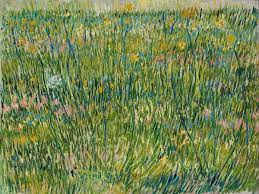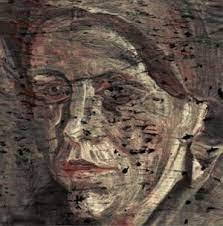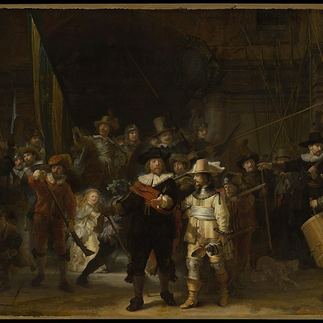Discovering hidden treasures: Famous artists who reused canvases
- Art Vancouver
- Aug 7, 2023
- 4 min read
Updated: Oct 4, 2023
Art history is filled with stories of artists repurposing canvases and painting over previous works. This has led to the remarkable discovery of hidden treasures. This article explores some famous artists and the hidden paintings found beneath.
There are various reasons why a painter would repurpose a canvas. Often the cost is a factor. Struggling artists had no choice but to reuse material. Sustainability is another factor, helping to reduce waste. Finally, many artists revise, explore and create new ideas as they work, which results in a finished piece different from the initial concept.
Whatever the reason for reusing, thanks to X-rays and non-invasive ultraviolet, infrared imaging techniques researchers can study the masterpieces and see the original artwork.
Pablo Picasso was known for frequently reusing canvases to create his masterpieces. In his early years, money was a struggle and as canvases and art supplies were costly, repurposing canvases allowed him to save money. It also allowed him to build upon previous work.
One famous example is his painting The Old Guitarist (1903). Through X-ray imaging, curators found three figures peering behind the old guitarist's body. The three figures are an old woman with her head bent forward; a young mother seated in the centre of the composition, reaching out with her left arm to her child kneeling at her side; and an animal thought to be a calf or sheep on the mother's left side.
Art historians discovered correspondence between Picasso and a friend where Picasso revealed he was painting the composition of the mother and child a few months before he began The Old Guitarist. The reason why Picasso did not complete the piece of the mother and child, and how the older woman fitted into the history of the canvas, remain unknown.
The Old Guitarist (1903) is an oil painting by Pablo Picasso. Beside is the detailed image of one of the hidden women.
Another Picasso example is his painting The Crouching Beggar (1902). In 2018, researchers found a landscape hidden beneath, which they believe is the Labyrinth of Horta in Barcelona. Experts suspected something was hidden since they noticed the surface texture was not consistent with the brushstrokes and unexpected colours could be seen through the cracks. Through X-ray imaging, they revealed the hidden landscape they believe was painted by another artist, but they are unable to identify who. They suspect it is the artist, Santiago Rusiñol.
The pictures revealed Picasso turned the landscape 90 degrees and painted over it. Picasso appeared to incorporate parts of the landscape into his new creation as the contours of the hills became the backside of the crouching woman. Researchers also found another layer between the original painting and Picasso's finished product and believe Picasso changed his mind again mid-painting. Turning the woman into the crouching beggar we see today.

Vincent van Gogh painted his masterpiece Patch of Grass in Paris in 1887. However, in 2008 using X-rays, researchers discovered a hidden portrait beneath. Patch of Grass features a vibrant landscape of blues and greens. The underlying painting was originally a portrait of a woman with a bonnet, created in browns and reds. The details show an image of a woman who appears to be a peasant. Experts believe about one-third of Van Gogh's work conceals other compositions.
Vincent van Gogh's Patch of Grass (1887) and the woman discovered painted underneath.
For decades, it was thought that Van Gogh didn’t paint Still Life with Meadow Flowers and Roses (1886-1887). Experts believed the details of the painting didn’t match his other work and as a result removed it from his catalogue of work.
It was only after the discovery of two wrestlers beneath the painting that the work was deemed to be a real Van Gogh. The artist had once remarked he had drawn two wrestlers and the fact he was known to reuse canvases led experts to ten years of research before confirming it was an authentic van Gogh. Why he decided to paint over it remains unknown.

Another notable example is Johannes Vermeer's Girl with a Pearl Earring (c. 1665). In 1994, during a restoration project at the Mauritshuis Museum in The Hague, infrared imaging revealed the presence of an earlier composition. The discovery revealed she was set against a green backdrop that had since faded. She also has eyelashes, but these are invisible to the naked eye. Despite uncovering more detail in his work, to this day, nobody knows who she is.

Johannes Vermeer's The Girl with a Pearl Earring (c. 1665), considered to be the most famous tronie. A tronie is a type of painting that has exaggerated facial expressions or costumes, this was a common type of portrait in the Dutch Golden Age (17th century).
Another famous Dutch Golden Age painting is Rembrandt's, The Night Watch (1642). Rembrandt was another artist famous for reusing canvases. Using state-of-the-art technology at the Rijksmuseum in Amsterdam, experts found that Rembrandt first sketched his iconic masterpiece. The sketch reveals evidence of a series of changes in the painting process including adjusting the number of feathers, spears and swords as well as the stance of Sergeant Rombout Kemp.
The discovery was proof that Rembrant sketched first before painting; before this discovery it was just an assumption. It gives us an inside look into his creative process and the origins of this masterpiece.
Rembrandt van Rijn’s The Night Watch (1642) and the sketch that lies beneath. The painting is famous for three things: its size (12 by 141⁄2 feet ), its use of light and shadow and the perception of motion.
The practice of reusing canvases by famous artists offers a fascinating glimpse into their creative processes and the evolution of their ideas. Discovering these treasures enriches our understanding and appreciation of their works. As technology gets more sophisticated, scientists can analyze even more, meaning many more paintings are waiting to unveil their hidden treasures.
By: Wendy Cooper
.png)













Comments